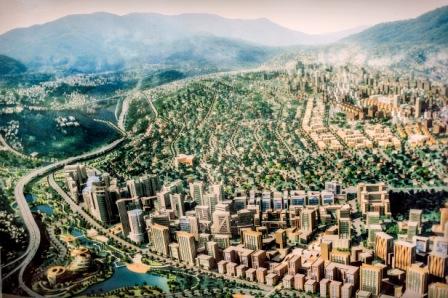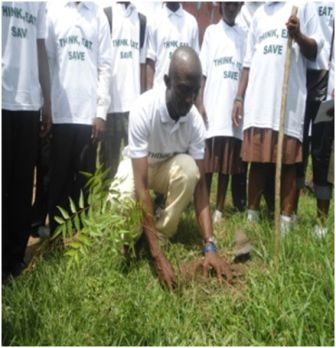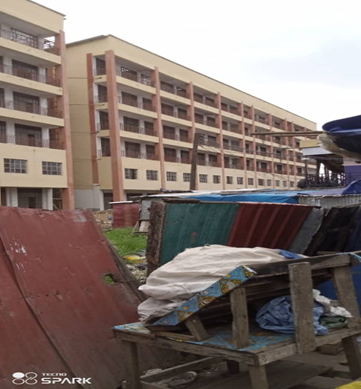Proper planning key to sustainable cities
Africa’s cities of the future
With an annual economic growth rate of about 5% over the last decade, driven mainly by the commodities boom, African cities have seen skyrocketing population growth, forcing governments to face a host of development challenges. (A model of the future Kigali City. An ambitious Kigali development master plan aims to turn the city into the ‘Singapore of Africa’. Photo: Panos/Sven Torfinn)
Africa is urbanizing at a rate of 4% per year, according to UN-Habitat, the United Nations agency tasked with assisting national programmes relating to human settlements through the provision of capital and technical assistance, particularly in developing countries. Population shifts from rural to urban areas lead to a number of challenges such as overcrowding, pollution and crime, among others.
“Urbanization in the Africa of today is an untapped tool for development and economic growth,” says Joan Clos, the executive director of UN-Habitat.
Over the next 15 years, cities in Africa will experience higher growth rates than other regions of the world, predicts Oxford Economics, a British firm that specialises in global forecasting and quantitative analysis for business and government, with Cape Town, Dar es Salaam, Johannesburg and Luanda becoming Africa’s major economic giants.
Jean Pierre Elong Mbassi, the secretary-general of United Cities and Local Governments-Africa (UCLG-A), a body representing over 1,000 African cities, describes sustainable cities as “cities of the future today,” meaning those that can withstand the intense pressure from rapid development and urban investments but have a low impact on the environment.
Economic growth and a rapidly growing population of about 1 billion mean more urbanization in Africa than in any other continent, with major cities in Africa currently contributing about $700 billion to the continent’s GDP. This figure is set to grow to $1.7 trillion by 2030, notes Oxford Economics.
UN-Habitat says rapid urbanization, especially in cities in the developing world, is bringing challenges in the distribution of people and resources, as well as in land use, which leads to inefficient land-use patterns. Cities growing horizontally are struggling to deal with increasing urban populations and are not likely to be sustainable over the long term because of challenges with congestion, infrastructure, pollution and social disaggregation.
An increase in migration from rural to urban areas can exacerbate poverty and inequality as people pour into the cities in search of jobs and opportunities, straining available services such as water, transportation and garbage collection.
“Urbanization, particularly in the developing world, has been accompanied by increased levels of crime, violence, and lawlessness. Global studies show that 60% of all urban residents in developing countries have been victims of crime at least once over the past five years, 70% of them in Latin America and Africa,” says UN-Habitat’s website.
Women and children are often the most affected, especially when fear hinders their access to basic services in the city. Crime and insecurity in the city restrict urban social and economic development, and often jeopardize opportunities and policies that support the poor in urban areas.
Sustainable cities
The need for sustainable cities is particularly urgent, considering cities generate over 70% of global carbon emissions. The one billion slum dwellers worldwide suffer the impacts of air pollution from indoor cooking, proximity to traffic and industry, contaminated water and inadequate sanitation, among other environmental health risks.
UN-Habitat suggests a three-pronged approach to sustainable cities, based on effective and comprehensive urban legislation, proper urban planning and design, and adequate financing for projects. The three principles can be levers for the transformation of cities and human settlements into centres of environmental, economic and social sustainability.
Climate change is a recent consideration in the planning of sustainable cities. Africa’s urban environments are particularly susceptible to flooding and outbreaks of diseases such as malaria. However, these can be mitigated through proper planning, effective policy implementation, the protection of ecologically sensitive areas, reforestation and the use of waste in energy generation, among other measures.
Given the economic and social challenges faced by many African cities, can they offer a high quality of life for residents through the provision of efficient basic services while at the same time ensuring that the environment is safe and clean?
“Yes, potentially,” says Mr. Mbassi, adding that this would require a pace of development in Africa that should not necessarily resemble that of the West.
“We should plan cities according to their specific situations and the needs of the local people, to ensure that cities include everyone and the poor are not marginalized in terms of accessing all the services a city has to offer,” Mr. Mbassi told Africa Renewal in an interview.
A new agenda
Working with the UN Economic Commission for Africa, UCLG-A developed the Africa Urban Agenda (AUA) to be adopted by African leaders in July 2016. The Agenda consists of actions Africa needs to take to improve its cities and settlements and to promote urbanization as a catalyst for Africa’s structural transformation. It represents Africa’s inputs into the Global Urban Agenda to be adopted at Habitat III, a conference on housing and sustainable urban development to be hosted by UN-Habitat in October 2016 in Quito, Ecuador.
Countries attending Habitat III, the first UN world summit after the adoption of the SDGs and the Paris climate change agreement, are expected to adopt the “New Urban Agenda” for the 21st century.
It is clear that urban planning requires a shift from viewing urbanization mainly as a problem, to seeing it as a tool for development, UN-Habitat says in UN-Habitat Global Activities Report 2015: Increasing Synergy for Greater National Ownership.
At a meeting organized by UN-Habitat and the Economic Commission for Africa (ECA) in Ethiopia in March 2014, called “The Role of Urbanization in the Structural Transformation of Africa,” the director of political affairs at the African Union Commission, Khabele Matlosa, said that African countries need to adopt new development models designed to take advantage of urbanization by facilitating structural transformation, creating jobs and addressing social inequality and poverty while creating habitable settlements with equal opportunities for all.
Starting smart to end slums
Although with good planning urbanization, industrialization, sustained economic growth and human development can be mutually reinforcing, there is urgent need for safe settlements too, according to a report by UN-Habitat, The State of the African Cities 2014: Re-Imagining Sustainable Urbanization.
Sub-Saharan Africa has a slum population of 199.5 million, which, according to UN-Habitat, is a sign of “a poorly planned and managed urban sector and, in particular, a malfunctioning housing sector.”
Africa is home to big slums such as West Point in Liberia’s capital, Monrovia, with more than 75,000 people, and Kenya’s Kibera slum in Nairobi, which is the largest in Africa, with over 2 million people.
Africa requires around 4 million housing units per year, with over 60% of the demand required to accommodate urban residents. Effective planning regulations and their enforcement will help cities deal with the growth of informal settlements and provide a map for how the cities will grow and develop, while promoting economic growth.
By Busani Bafana, courtesy of Africa Renewal
Stay with Sierra Express Media, for your trusted place in news!
© 2016, https:. All rights reserved.






